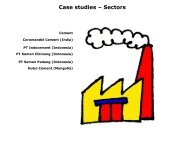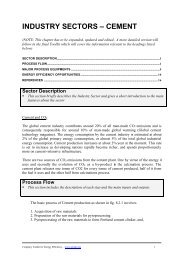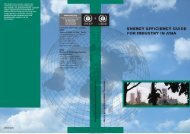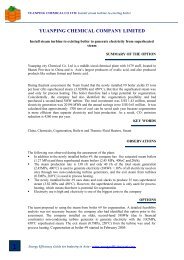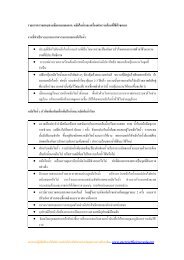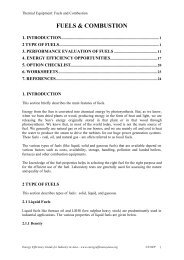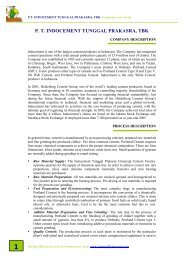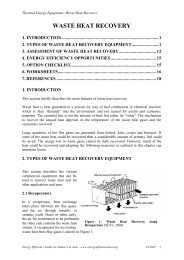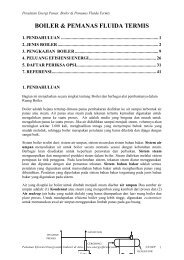Chapter – Cooling Towers - RETScreen International
Chapter – Cooling Towers - RETScreen International
Chapter – Cooling Towers - RETScreen International
Create successful ePaper yourself
Turn your PDF publications into a flip-book with our unique Google optimized e-Paper software.
Electrical Energy Equipment: <strong>Cooling</strong> <strong>Towers</strong>• Splash fill media. Splash fill media generates the required heat exchange area bysplashing water over the fill media into smaller water droplets. The surface area of thewater droplets is the surface area for heat exchange with the air.• Film fill media. In a film fill, water forms a thin film on either side of fill sheets. Thesurface area of the fill sheets is the area for heat exchange with the surrounding air. Filmfill can result in significant electricity savings due to fewer air and pumping headrequirements.• Low-clog film fills. Low-clog film fills with higher flute sizes were recently developed tohandle high turbid waters. Low clog film fills are considered as the best choice for seawater in terms of power savings and performance compared to conventional splash typefills.Table 1: Design Values of Different Types of Fill(BEE India, 2004; Ramarao; and Shivaraman)Splash fill Film fill Low clog film fillPossible L/G ratio 1.1 <strong>–</strong> 1.5 1.5 <strong>–</strong> 2.0 1.4 <strong>–</strong> 1.8Effective heat exchange area 30 <strong>–</strong> 45 m 2 /m 3 150 m 2 /m 3 85 - 100 m 2 /m 3Fill height required 5 <strong>–</strong> 10 m 1.2 <strong>–</strong> 1.5 m 1.5 <strong>–</strong> 1.8 mPumping head required 9 <strong>–</strong> 12 m 5 <strong>–</strong> 8 m 6 <strong>–</strong> 9 mQuantity of air required High Lowest Low4.3 Pumps and water distribution4.3.1 PumpsAreas for energy efficiency improvements are discussed in details in the Pumps and PumpingSystems chapter.4.3.2 Optimize cooling water treatment<strong>Cooling</strong> water treatment (e.g. to control suspended solids, algae growth) is mandatory for anycooling tower independent of what fill media is used. With increasing costs of water, effortsto increase Cycles of Concentration (COC), by cooling water treatment would help to reducemake up water requirements significantly. In large industries and power plants improving theCOC is often considered a key area for water conservation.4.3.3 Install drift eliminatorsIt is very difficult to ignore drift problems in cooling towers. Nowadays most of the end userspecifications assume a 0.02% drift loss.But thanks to technological developments and the production of PVC, manufacturers haveimproved drift eliminator designs. As a result drift losses can now be as low as 0.003 <strong>–</strong>0.001%.4.4 <strong>Cooling</strong> tower fansThe purpose of a cooling tower fan is to move a specified quantity of air through the system.The fan has to overcome the system resistance, which is defined as the pressure loss, to movethe air. The fan output or work done by the fan is the product of air flow and the pressureloss. The fan output and kW input determines the fan efficiency.Energy Efficiency Guide for Industry in Asia <strong>–</strong> www.energyefficiencyasia.org ©UNEP 12



